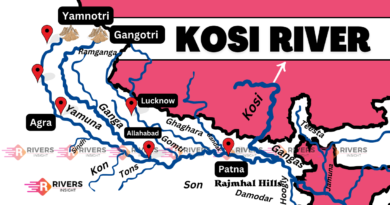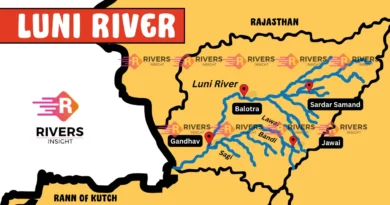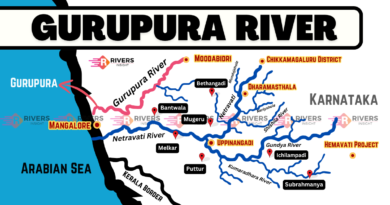Karmanasa River: Map, Origin, Course in Bihar
The Karmanasa River is a significant tributary of the Ganga River that flows through the eastern part of India. Although relatively lesser-known compared to major rivers, it holds geographical, cultural, and mythological importance in the states of Uttar Pradesh and Bihar.
The name “Karmanasa” means “destroyer of religious merit,” giving the river a unique place in local folklore and history.
Origin of the Karmanasa River
The Karmanasa River originates in the Kaimur hills near the village of Sarodag in the Kaimur district of Bihar. It begins its journey at an elevation of about 350 meters above sea level. This river emerges from the hilly terrain and gradually descends into the fertile plains of eastern Uttar Pradesh and Bihar.
Course of the River
The Karmanasa River flows in a northwesterly direction through:
- Kaimur district (Bihar)
- Sonbhadra district (Uttar Pradesh)
- Chandauli district (Uttar Pradesh)
- Ghazipur district (Uttar Pradesh)
Eventually, it joins the Ganga River near Chausa in Buxar district, Bihar.
- Total length: Approximately 192 kilometers
- Catchment area: Around 11,709 square kilometers
Major Tributaries of the Karmanasa River
- Durgavati River
- Chandraprabha River
- Ghoghar River
- Garai River
Karmanasa Falls and Dams
One notable feature of the river is the Karmanasa Falls, also called Karkat Waterfall, located near the origin in the Kaimur Hills. It is a scenic spot and has some tourism potential.
The Latif Shah Dam is constructed on the river near the Kaimur region for irrigation purposes.
Confluence with the Ganga
The river finally merges with the Ganga River at Chausa, a location known historically for the Battle of Chausa in 1539 between Sher Shah Suri and Humayun. This confluence point is of both historical and hydrological importance.




